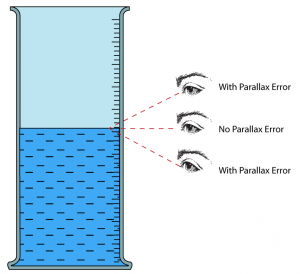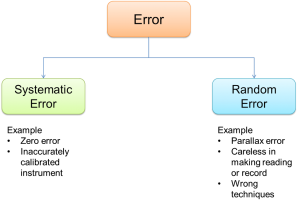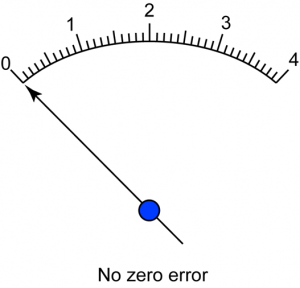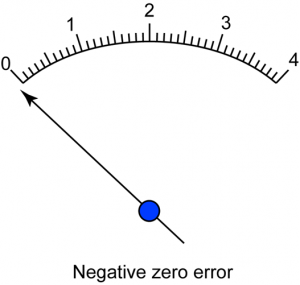Error
- Error is the difference between the actual value of a quantity and the value obtained in measurement.
- There are 2 main types of error
- Systematic Error
- Random Error
Systematic Error
- Systematic errors are errors which tend to shift all measurements in a systematic way so their mean value is displaced. Systematic errors can be compensated if the errors are known.
- Examples of systematic errors are
- zero error, which cause by an incorrect position of the zero point
- an incorrect calibration of the measuring instrument.
- consistently improper use of equipment.
- Systematic error can be reduced by
- Conducting the experiment with care.
- Repeating the experiment by using different instruments.
Zero error
- A zero error arises when the measuring instrument does not start from exactly zero.
- Zero errors are consistently present in every reading of a measurement.
- The zero error can be positive or negative.
(NEGATIVE ZERO ERROR: The pointer of the ammeter does not place on zero but a negative value when no current flow through it.)
(POSITIVE ZERO ERROR: The pointer of the ammeter does not place on zero but a negative value when no current flow through it.)
Random errors
- Random errors arise from unknown and unpredictable variations in condition.
- It fluctuates from one measurement to the next.
- Random errors are caused by factors that are beyond the control of the observers.
- Random error can cause by
- personal errors such as human limitations of sight and touch.
- lack of sensitivity of the instrument: the instrument fail to respond to the small change.
- natural errors such as changes in temperature or wind, while the experiment is in progress.
- the wrong technique of measurement.
- One example of random error is the parallax error. Random error can be reduced by
- taking repeat readings
- find the average value of the reading.
Parallax error
A parallax error is an error in reading an instrument due to the eye of the observer and pointer are not in a line perpendicular to the plane of the scale.
External Link



